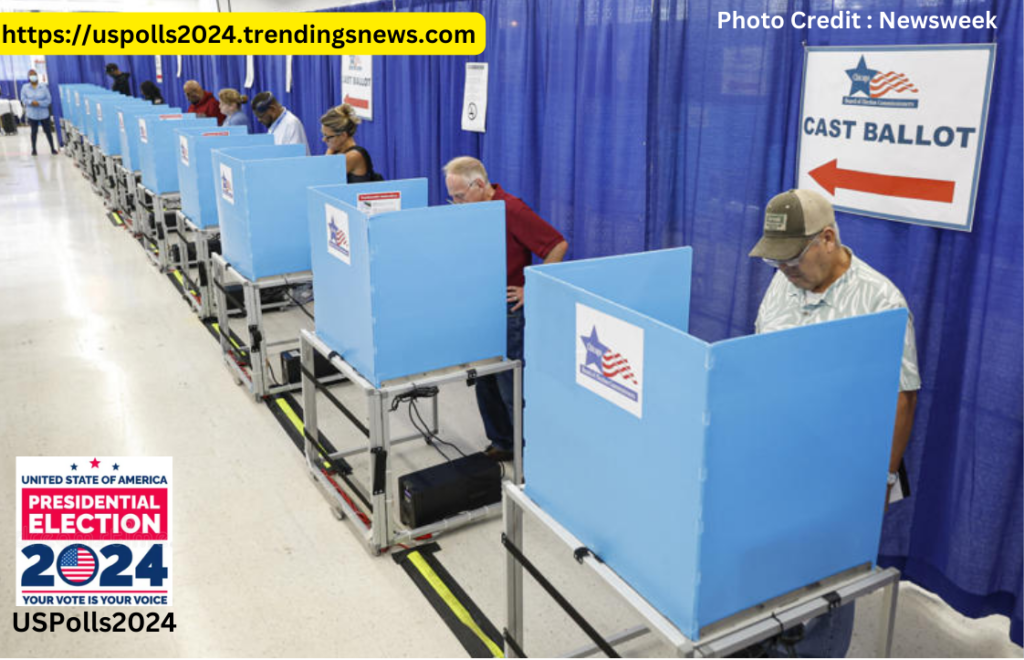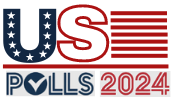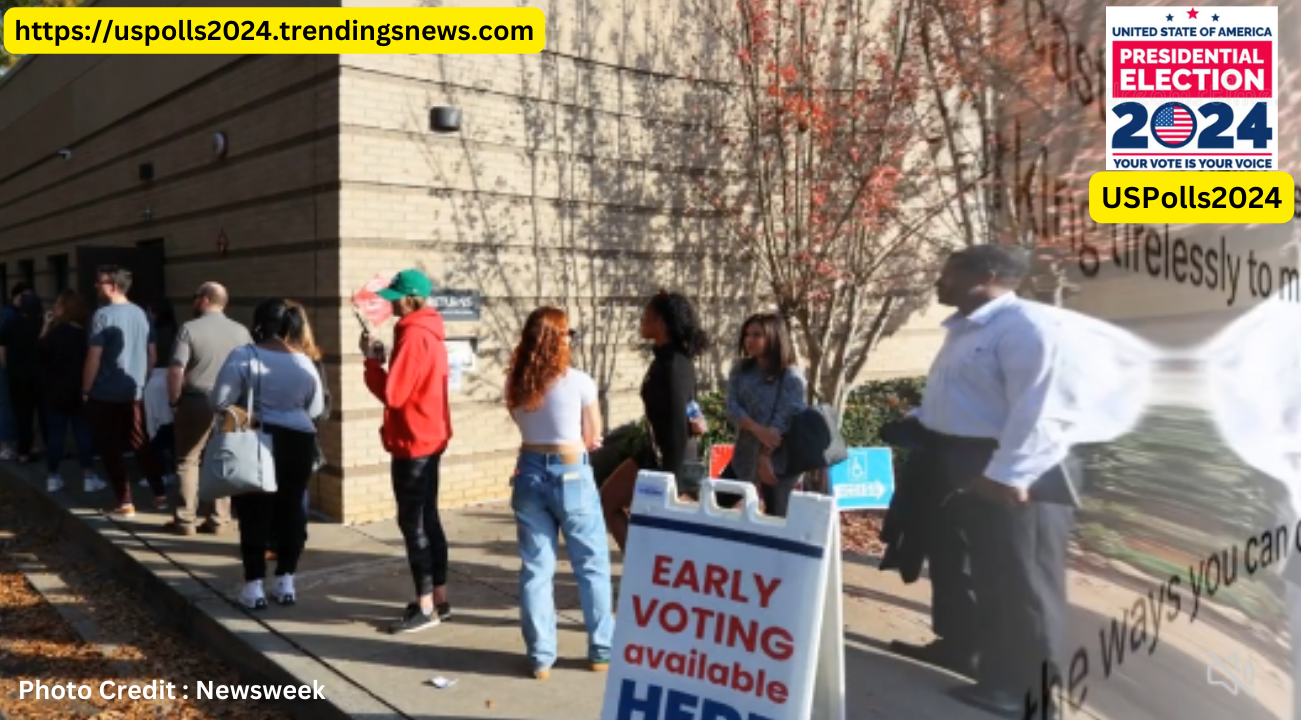As millions of Americans head to the polls early in the lead-up to the 2024 election, Early Voting Predictions 2024 are taking center stage.
This election season is shaping up to be one of the closest in U.S. history, with a landscape reflecting deep political divides and an evolving voter base.
Understanding the nuances of early voting and what it means for candidates Kamala Harris and Donald Trump is crucial as we move closer to Election Day.
The Rise of Early Voting
A Snapshot of Early Voting Trends
Early Voting Predictions 2024 indicate that early voting has become a staple in American elections, with nearly every state offering some form of it.
As of now, 47 states and the District of Columbia allow registered voters to cast their ballots before Election Day.
The dates for early voting vary significantly; some states, like Minnesota and Virginia, opened their polling locations in September, while others, such as Kentucky and Oklahoma, opened less than a week before Election Day.
Georgia and North Carolina are witnessing a historic turnout, with over 310,000 votes cast on the first day in Georgia alone.
In North Carolina, more than 353,000 ballots were submitted on the inaugural day of early voting.
Such high engagement levels suggest a strong interest among voters, hinting at a competitive race ahead.
Early Voting and Voter Behavior
The Early Voting Predictions 2024 show that the 2024 election is witnessing a notable trend where Democratic voters typically favor early voting more than Republicans.
Despite Donald Trump’s past claims that mail-in voting invites fraud, the Republican party has shifted its stance, encouraging voters to take advantage of early voting options.
Trump described early voting as “stupid stuff” at a rally but ultimately urged supporters to vote by any means necessary.
Early Voting and Voter Behavior
The Early Voting Predictions 2024 show that the 2024 election is witnessing a notable trend where Democratic voters typically favor early voting more than Republicans.
Despite Donald Trump’s past claims that mail-in voting invites fraud, the Republican party has shifted its stance, encouraging voters to take advantage of early voting options.
Trump described early voting as “stupid stuff” at a rally but ultimately urged supporters to vote by any means necessary.
This change in messaging reflects a broader acknowledgment of the importance of early voting in mobilizing the electorate.
Many Republican leaders now recognize that early voting can play a crucial role in their chances of winning key races, especially in battleground states where every vote counts.
Who’s Leading the Early Voting Polls?
Polling data provides critical insights into Early Voting Predictions 2024. A recent USA Today/Suffolk University survey revealed that Harris leads Trump among early voters by a significant margin—63% to 34%.
However, this lead is not indicative of overall voter sentiment, as Trump shows a strong preference among those planning to vote on Election Day, leading Harris 52% to 35%.
According to NBC News, nearly 14.5 million voters have cast ballots thus far, with 46% identifying as Democrats and 29% as Republicans.
Interestingly, in key battleground states, registered Democrats and Republicans show nearly equal early voting rates.
For instance, in Georgia, Republicans account for 49% of early votes, closely followed by Democrats at 46%.
In Nevada, the breakdown is 40% Democratic and 35% Republican, while North Carolina reflects a similar trend with 36% Democratic and 33% Republican early voters.
Analyzing Early Voting Predictions 2024
Implications for Harris and Trump
Early Voting Predictions 2024 suggest that Harris’s current lead among early voters offers a promising start for her campaign, but it remains to be seen how this will translate into overall election results.
Polling averages indicate that while Harris is leading by approximately 1.8 points nationally, Trump’s advantage in the Electoral College remains a factor that could tip the scales in his favor.
The dynamics of early voting highlight how different demographics engage with the electoral process.
While Harris may have a strong showing among early voters, the enthusiasm and turnout on Election Day could be pivotal for Trump.
This inconsistency could lead to a surprising result, depending on how both campaigns mobilize their supporters in the final days.
Battleground States: A Closer Look
The battleground states are crucial for both candidates and are tightly contested.
As per Five Thirty Eight’s polling tracker, Harris and Trump are tied in most battleground states, though Trump holds a slight edge in North Carolina, Georgia, and Arizona.
These states will be critical in determining the overall outcome of the election.
The varied early voting patterns across states suggest that each campaign will need tailored strategies to maximize turnout. In states where early voting is popular among Democrats, the Harris campaign may focus on solidifying that base.
Conversely, Trump’s team will likely push for a robust ground game to ensure that Election Day voters are mobilized effectively.
Election Day: What to Expect
Key Dates and Logistics

Federal law dictates that Election Day falls on the Tuesday following the first Monday in November, which this year is November 5.
While Election Day is not a federal holiday, many states allow time off for employees to cast their votes, emphasizing the importance of participation.
Organizations and advocacy groups are also ramping up efforts to ensure that voters have the necessary information about polling places, ID requirements, and voting methods.
Contingency Plans and Concerns
Experts are already voicing concerns regarding potential fallout if Trump loses.
He has perpetuated unfounded claims about the integrity of elections, raising questions about how he might respond to unfavorable results.
Historical precedents indicate that his team may mount legal challenges, echoing strategies from previous election cycles.
In this environment of uncertainty, both campaigns are preparing for various scenarios.
The Harris campaign has focused on emphasizing the importance of a smooth and fair election process, while Trump’s team continues to promote the idea of election integrity, framing their narrative around potential fraud.
Comparing 2024 to 2020
The 2020 election was characterized by a record number of early voters, driven largely by the COVID-19 pandemic.
Early Voting Predictions 2024 indicate that early voting in 2020 saw Democrats outpacing Republicans significantly.
By October 2020, over 22 million ballots had already been cast, a substantial increase from previous elections.
Lessons from the Past
This year’s Early Voting Predictions 2024 show a more balanced turnout among party lines in key battleground states compared to 2020.
The changing political landscape may impact how candidates approach their final strategies leading up to November.
For example, in states like Wisconsin and Pennsylvania, where early voting favored Democrats significantly in 2020, the 2024 election may see a more competitive environment, with Republicans increasing their early voting participation.
The Importance of Voter Engagement
Mobilizing the Electorate
Both campaigns are investing heavily in grassroots efforts to mobilize voters.
Early Voting Predictions 2024 suggest that the ability to engage voters effectively will be crucial.
Harris has focused on themes of unity and progress, aiming to attract undecided voters and those disenchanted with the political status quo.
On the other hand, Trump’s campaign has leaned into a more populist message, emphasizing economic recovery and national pride.
The messaging strategies employed by both candidates will be instrumental in shaping voter turnout and enthusiasm.
Utilizing Technology and Data
In the modern political landscape, technology plays a vital role in voter engagement. Both campaigns are leveraging data analytics to identify key voter segments and tailor their outreach efforts.
From social media campaigns to targeted advertisements, the ability to connect with voters through their preferred channels is more important than ever.
Final Thoughts: The Stakes are High
As we analyze Early Voting Predictions 2024, it’s evident that the race is tightening.
Kamala Harris’s current standing may reflect a shifting tide, but Trump’s resilient support in key demographics suggests that the battle is far from over.
The coming weeks will be critical as both campaigns ramp up their efforts to sway undecided voters and ensure their bases turn out on Election Day.
Kamala Harris on Track to Shatter Democratic Records
With her focus on engaging voters and addressing pressing issues, Kamala Harris is positioned to not only compete but potentially shatter previous Democratic turnout records.
As early voting continues to unfold, the final weeks will be pivotal in determining the election’s outcome.
The dynamics of early voting will play a crucial role in shaping the narrative leading up to November 5.

